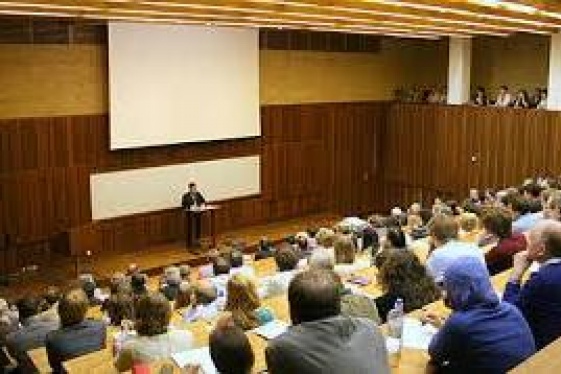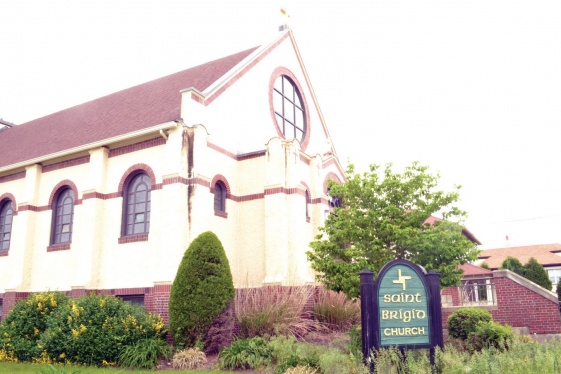
Pamela Wright (President General of the National Society Daughters of the American Revolution)
L'italoamericana Presidente della National Society Daughters of the American Revolution

We begin 2023 with an interview that is particularly dear to me. Those who know me know how much I cherish the history and celebration of American war efforts and the heroes who under the Star-Spangled Banner helped liberate many countries, starting with Italy.
The National Society Daughters of the American Revolution is a wonderful institution that does just that, and it is chaired by an excellent Italian American who is very proud of her roots, Pamela Rouse Wright. We are very happy to begin the year by hosting her and together with her all the members, Italian American and not, of this beloved organization to which we are very grateful indeed
Good morning, Pamela, and welcome on We the Italians. Please tell us a bit about you and your Italian heritage
Thank you, Umberto, for your wonderful invitation to be interviewed on We The Italians.
My family tree is a tapestry of immigrant ancestors who arrived in America starting in the 1600s through the late the 1800s. I am proud of my personal ancestral connection to Italy, il bel paese. In the 1870s, my great grandfather, Carlo Bucci, immigrated to the United States from the Campobasso Province. Like many Italian immigrants, Carlo journeyed to the United States to establish a new life for himself and his family. After he arrived in America, he changed his name from Carlo Bucci to Charles Walter Smith.
Special stories and memories about great grandfather Carlo were passed down through generations of my family. My late grandmother was always proud that her father was Italian. As my grandmother and I started to do genealogy, we discovered more about our Italian roots, Carlo and his life here in the United States.
My great grandfather, Carlo, played in bands in the late 1800s and early 1900s. Family lore says that he played in John Philip Sousa’s Band. Research is currently in progress with the hope of confirming this family story, but unfortunately, record keeping of band rosters during this time period was not always consistent. We do know that he was a hardworking and talented musician and shoemaker who resided in Pennsylvania and Georgia. Some have asked me if I inherited great grandfather Carlo’s musical talents – I wish I had! This musically ability seems to have skipped a few generations to my seven-year-old grandson who plays the piano.
You are the President General of the National Society Daughters of the American Revolution. Please tell our readers something about the history and the activities of the organization you are leading
I joined DAR more than 35 years ago and am honored to serve as the 46th President General of the National Society Daughters of the American Revolution (DAR). Organized in 1890 and headquartered in Washington, D.C., DAR is the largest non-profit, non-political, patriotic women’s service organization in the world with membership at 190,000 worldwide and chapters in eleven countries including a chapter in Rome, Italy. Women of all ethnic and cultural backgrounds who descend from someone who contributed to the cause of Independence during the American Revolutionary War are eligible to join DAR (http://dar.org/join). Many DAR members, like me, descend from more recent immigrants in addition to having deep roots dating back to the American Revolutionary War. Our shared links to the American Revolution and dedication to meaningful community service are common bonds that unites every member of our organization.
There is something for everyone to contribute in DAR. Our organization’s mission is to promote historic preservation, education and patriotism and our 3,000 chapters across the world focus their grassroots volunteer work on those three tenets of our Society. Much of the work of our Society is accomplished through our more than 50 active committees that focus on initiatives to support and promote history, genealogy, education, literacy, scholarships, veterans, active-duty military, conservation, committee service and much more. Our members volunteer millions of hours of community service in these areas each year.
DAR also owns one of the largest woman-owned properties in the world – an entire city block in Washington, D.C. Two of the three buildings of our interconnected headquarters complex are Registered National Historic Landmarks. Our DAR Headquarters includes the beautifully restored 3,700 seat concert hall, DAR Constitution Hall; one of the premiere genealogical research libraries, the DAR Library; our decorative arts collection displayed in our 31 period rooms and the DAR Museum Gallery; and our administrative offices for more than 150 employees. We are delighted to welcome tens of thousands of visitors to our historic buildings each year.
As a more than 130-year-old service organization, we have a storied history of significant projects and contributions to America and the world – far too many to go into detail, but I would love to share just a few.
DAR has been active in supporting active duty troops through all of the United States wartime conflicts, from the DAR Hospital Corps certifying nurses during the Spanish-American War; to members assembling care kits for soldiers in hospitals during WWI; to donating the use of the DAR Headquarters building in Washington, D.C., to the American Red Cross to support the efforts during WWII, among many other partnered support with the America Red Cross during the war; to a myriad of contemporary efforts supporting troops today including contributing more than $200,000 annually to supporting active duty military and their families. DAR members are also passionate about supporting veterans and volunteer more than 400,000 hours annually in veteran facilities. DAR is one of the largest groups to serve on the Veterans Affairs Voluntary Service National Advisory Board and Executive Committee.
DAR has always been very active in assisting immigrants seeking citizenship in the United States and in 1921 DAR compiled, published and distributed the DAR Manual for Citizenship to American immigrants at Ellis Island and other ports of entry. DAR also provided occupational therapy and materials for sewing, wood, and leather work to the immigrants detained for processing on Ellis Island to help alleviate depression and anxiety of the immigrants in a new land. The DAR’s strong connection to Ellis Island continued into the 1980s by donating significant funds for a major restoration of Ellis Island and sponsoring the New Immigrants Gallery at Ellis Island.
DAR members have placed historic markers across the country and around the world commemorating important moments in history as well as passionately work to preserve historic homes and sites ranging from small local historic buildings to Independence Hall in Philadelphia. The DAR annually awards more than $250,000 in historic preservation grants that go toward local efforts to restore historic buildings, documents and artifacts as well as placing historic markers. DAR also contributes thousands of dollars in scholarships to students every year to assist with college tuition costs and sponsors American history essay contests to engage students in the importance of education.
In addition to many genealogical and historical research and preservation projects that DAR chapters participate in, the National Society recently created a program called the E Pluribus Unum Educational Initiative to increase awareness of Patriots of Color in the American Revolution, encourage their descendants to consider membership in the DAR, and publish more genealogical resources about people of color.
The DAR projects and activities today are endless and focus on both remembering the formation of the United States while also looking to the future to support the betterment of our next generations. I am so proud of the work our members do preserving our country’s history and supporting those in their local communities and around the world.
How many Italian American members do you have at this moment?
This is a great question. DAR does not track the ancestral demographics of our members. We are proud to have members from a diverse set of backgrounds and experiences, including Italian American members. After a DAR membership application has been submitted, our team of staff genealogists verifies lineage from each DAR member back to a Patriot who served in the American Revolution.
You told me before that Daughters of the American Revolution has a chapter in Rome too…
That’s right, DAR has a local chapter in Rome, Italy called the Pax Romana Chapter. The Pax Romana Chapter supports DAR’s mission of historic preservation, education and patriotism. Over the years, the chapter has been involved in many outstanding service projects including locating and marking the graves of DAR members who are buried in Italy and restoring the gravestones of Americans buried in Italy. I look forward to visiting with the members of the Pax Romana Chapter later this year.
Please tell us about the trip to Italy your association will do in Italy in November 2023
Our National Society will be taking a delegation of DAR members on an official tour to Italy in November 2023. This trip will focus on memorializing Filippo Mazzei and marks 250 years since he first came to Virginia and became lifelong friends with Thomas Jefferson. The group will re-dedicate a plaque at his final resting place in Pisa, Italy and honor his many contributions to the Revolutionary War effort.
This tour will provide an opportunity to honor the meaningful contributions of many Italians in the American Revolution, and also serve as a homecoming to the beautiful homeland of my great grandfather Carlo Bucci.
You may be interested
-
2015 Bocce Bash!!
Please join Mia Maria Order Sons of Italy in America Lodge #2813 as we host the 2015...
-
ITALIAN DINNER and RECEPTION...
The National Council for the Promotion of Italian Language in American Schools(National CO...
-
Italian Americans media and beyond: between...
The Department of Italian invites you to a lecture by Fulvio S. Orsitto who is an Associat...
-
'Bad boy' Mike Marino helps disabled girl, Br...
by Pamela MacKenzie He may have some irreverent slants on life and some jokes in...
-
'Duty' to confirm Italy-US alliance says Gent...
Italian Premier Paolo Gentiloni will say in a speech to the Center for Strategic and Inter...
-
'Everybody knew your name'
Millie Santilli saw the writing on the wall for St. Brigid Church, of which she had been a...
-
'Italian mama' runs Colonie thrift shop to su...
In the back room of an eclectic Central Avenue house, Theresa Viva opened her arms to take...
-
'We're just getting started.' Fairfield Count...
Saugatuck Sweets in Fairfield and Westport is known for its ice cream but also its outreac...




























